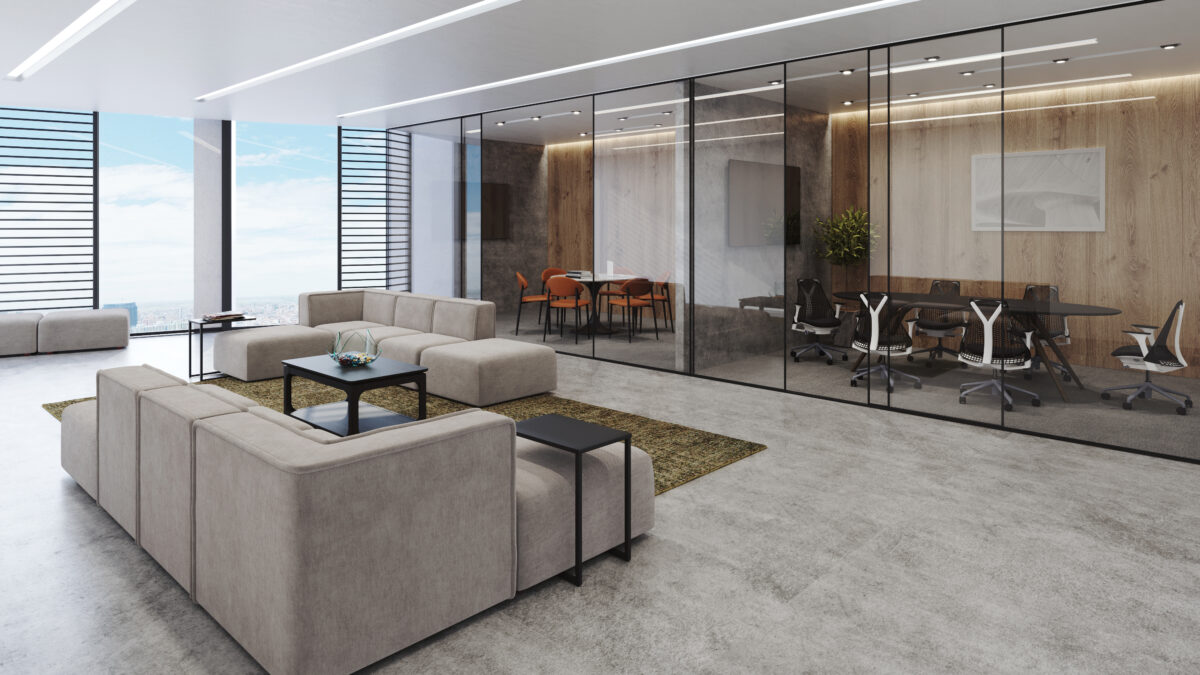The supply chain is made up of all the touchpoints, starting with the creation of a good through its final delivery to customers. Any one item flows through the hands of multiple manufacturers, sub assemblers, distributors, and transportation companies before it gets to consumers. The infrastructure needed for each step ranges from buildings to trucks and trains to ships.
After the pandemic prompted global shutdowns and most of the world was in stay-at-home mode, consumer demand changed. And as things started opening up again, demand for goods of all types surged, straining supply chains that were already disrupted by COVID. As a result, supply chain issues have created chaos around the world. As businesses around the globe begin to slowly emerge from their pandemic-induced cocoon, a new economic disruption threatens to create chaos for manufacturers and distributors, businesses, and consumers around the planet.
As CORT’s corporate vice president explains, “Shutting down factories, distribution centers, etc. cuts off vital supply to the downstream components, starving the supply chain. It’s no different than a main artery getting severed in the body and starving the heart of its precious blood supply. Eventually, the heart won’t have any blood to pump, and it will stop beating.”
The shutdowns, particularly those in Asia, play a major role in the current supply chain issues we’re facing, but that’s not the only factor. Year over year, worldwide demand for tangible goods increased by approximately 7%, but in the US, net consumption of tangible goods has soared by more than 30% since 2019. The infrastructure simply isn’t designed or prepared for that kind of increase. Add in shortages of raw goods, a shortage of skilled labor, and mounting freight costs, and it’s like the perfect storm for in the U.S. October’s trucking freight rates rose by more than 36% compared to the year before.
Experts predict that we’ll be dealing with the situation well into 2022 and possibly into 2023. And as organizations start bringing workers back to the physical workplace, the supply chain bottlenecks are wreaking havoc on those plans. Lead times on electronics, office equipment, and office furniture are all making it more difficult for businesses to return employees to existing office spaces or open new office spaces.
Mikako Kitagawa, a research director at Gartner Inc. who focuses on tech, spoke with the Wall Street Journal about the delays expected for office equipment like desktop computers. “We are looking at up to 120 days’ wait for some large enterprises if they have specific components required, and right now they are planning to receive the devices in January and February.”
How Can These Issues Disrupt Returning to an Existing Office or New Office Space?
Many companies used the pandemic as an opportunity to rethink the future of their offices. In some cases, organizations shed significant square footage and furnishings as they went completely virtual. This enabled these businesses to save a large amount of capital while creating flexibility to experiment with where work is done.
As the workplace continues to be reimagined, organizations are choosing to redesign their offices by converting existing spaces like private offices into huddle rooms or ZOOM rooms for video conference calls. They’re also adding new furniture and new equipment. In turn, this has created a spike in the demand for these items.
Marcum says it best, “Employees need a place to work effectively. Not having the appropriate functional furniture and equipment will inhibit the ability to meet a specific move-in date. And if no furnishings are available, that will lead to ineffective capital spending on real estate that isn’t fully utilized. The office space is a space to collaborate, and it needs to function for the benefit of bringing employees together to solve problems and to put forward innovative ideas.”
One company that faced this exact challenge in 2021 was Kestra Financial, a financial services platform that processes investment transactions and provides investment advisory services. Last year, Kestra Financial faced a delay in the delivery of their office furniture while moving three offices in San Antonio, Boca Raton, and Monte Claire. During that waiting period, their furniture, like many others, became stuck on shipping containers and caused the company to look to CORT Furniture Rental to navigate this unknown.
Access While Waiting for Ownership: What to Do While Facing a Furniture Delay
Managing supply chain disruptions effectively requires bridging the gap between your permanent furniture and equipment and your immediate needs and desires to bring employees back to the workplace. Marcum notes, “Recognizing that it may not have the same look or aesthetic as their permanent choices will have, furniture rental can provide the same function and utilization of space in order to manage that large capital investment that is office space.”
Additionally, when you choose access over ownership, it gives you an opportunity to gain a deeper understanding of how and where employees use space, which is critical before making a large capital investment that you’ll be locked into for decades. With ownership, you’ve got a fixed asset that’s a considerable expense. Even under normal circumstances, it requires a lead time of at least eight weeks, notwithstanding manufacturing delays or shipping snafus. In today’s climate, it could be twice that amount of time or longer.
Access, on the other hand, opens up your options and gives you a viable alternative to waiting to open until your furniture arrives. When you’re looking at access vs. ownership, there are four main questions to consider. Ask yourself:
- How can I ensure flexibility during my delay? By renting furniture, you gain the ultimate flexibility. You can change up the aesthetic, switch your floor plan and design, scale quickly or downsize depending on your changing needs.
- What is my upfront investment while I wait? When you buy office furniture, it requires a large outlay of cash. When you opt for access, you’ll have monthly payments that are based on what you need right now, and when your permanent furniture arrives, you can opt-out and those monthly payments end.
- What is my long-range investment while I wait? One of the beautiful things about access is the low risk it carries. When you opt to rent furniture with CORT, we own those assets and take care of all the servicing. You don’t need to worry about repairs, the cost of replacing items, or what happens when you need to modify your plans.
- How important is speed to market if I wait vs. if I choose office furniture rental? While you could be waiting months (or longer) for your permanent office furniture and equipment, renting furniture gives you nearly instant access in comparison. Within as little as three to five days, everything could be delivered and set up for you.
How to Overcome Supply Chain Disruptions with CORT
Since the early days of the pandemic, if we’ve learned anything, it’s this: flexibility, agility, and adaptability are critical for responding quickly to disruptions of any kind.
CORT’s Furniture-as-a-Service™ (FaaS) model provides organizations with the ability to pivot quickly, with low risk – providing organizations with the room to experiment with the workplace while still meeting their current business goals as well as the ability to quickly change things up where they’re needed in the future.
Given the supply chain disruptions upending plans and strategies across the globe, CORT has helped businesses reimagine their workplaces and reopen even while waiting for their permanent furniture and equipment.
In 2021, CORT worked with Gilbane, a national construction and facility management company, to complete a project on a higher education campus. While facing a 3-4 month delay in the delivery of their permanent furniture for an academic building, Gilbane turned to CORT for our availability of furniture to meet their client’s need. Because CORT assumes all the risk, we supplied access to furnishings for school operations, teacher offices, as well as group seating from day one of the academic year.
Are you ready to work with CORT Furniture Rental? Take the next step and discover the benefits of FaaS for returning to the office and so much more. You can also explore our website to learn more about how we can help you rethink your office space to better suit your changing needs.






